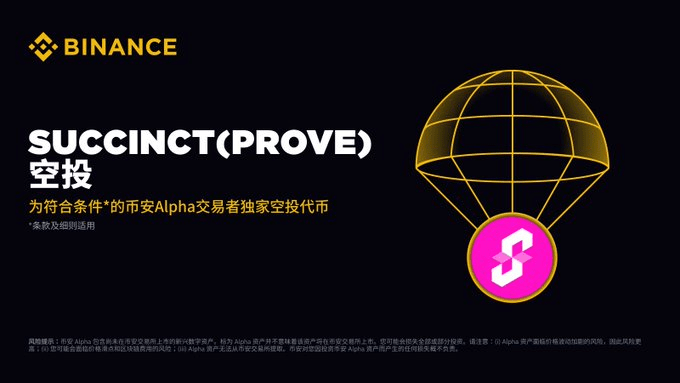
Why does zero-knowledge proof need a 'computing power revolution'?
Zero-knowledge proof (ZKP) technology is moving from theory to large-scale application, but a key contradiction remains unresolved: How to truly achieve decentralized generation of efficient, low-cost proofs? In traditional models, ZK proofs rely on high-performance servers from a few specialized institutions or are limited by slow on-chain verification, which directly restricts the application of ZK in scenarios like privacy computing and blockchain scalability. However, Succinct Network's answer may rewrite industry rules — through a global 'proof contest' for computing power, making zero-knowledge proofs available on demand like water and electricity.
When Rust meets zkVM: The breakthrough point of general verification
Succinct's core technological breakthrough lies in its zkVM solution SP1. Unlike most ZK projects focusing on specific fields (such as zkEVM), SP1 directly targets 'general verification' — any program written in Rust can generate zero-knowledge proofs without complex modifications. This design significantly lowers the development threshold, allowing developers to integrate ZK capabilities into applications without needing deep knowledge of cryptography or custom circuits.
From the data, SP1's verification efficiency has commercial potential: the proof generation time can be controlled within seconds, and the verification cost is reduced by more than 90% compared to traditional solutions. This performance does not come from hardware stacking but is achieved through an innovative virtual machine architecture. For example, in the ZK light client verification on Ethereum Layer 2, Succinct Network's testnet has compressed the proof generation time to 1/5 of traditional solutions while maintaining complete decentralization.
PROVE mechanism: Reconstructing the computing power market using game theory
What truly sets Succinct apart is its PROVE mechanism. It is essentially a game theory-based computing power scheduling system that dynamically matches supply and demand through 'proof contests'. When a user submits a proof request, the network triggers the following process:
1. Permissionless bidding: Any global node with a GPU can participate, and the bid includes costs and completion deadlines;
2. Tullock competition model: The winner receives full compensation, but the losers still bear some costs to prevent malicious low-price dumping;
3. Dynamic load balancing: High-frequency tasks are automatically split into sub-proofs and processed in parallel by multiple nodes.
This design produces a threefold effect: First, the hardware threshold is lowered from professional ASICs to consumer-grade GPUs, allowing ordinary household nodes to participate; second, market competition drives proof prices down to near marginal cost; finally, the decentralized structure avoids the risk of single points of failure. Empirical data shows that under the same computing power scale, the task throughput of the PROVE mechanism is three times higher than centralized solutions, while the cost is only 20% of the latter.
From infrastructure to ecological leverage
Succinct's ambitions go beyond technical tools. Its network effects are forming two growth curves:
- Developer ecosystem: More than 200 projects have developed ZK applications based on SP1, covering fields such as Rollup verification, privacy computing, and AI model verification. For example, a leading Layer 2 project increased its state transition proof generation speed by 40 times after using Succinct Network;
- Computing power network: The number of distributed nodes attracted by the PROVE mechanism has grown tenfold in six months, with the proof pool scale exceeding 100,000 GPU hours/day, which in turn further lowers service prices.
From an investment perspective, Succinct's value capture model is similar to early AWS — lowering industry thresholds through standardized infrastructure and then establishing a moat through economies of scale. The difference is that its decentralized nature prevents profits from being monopolized by a single entity, instead distributing them back to ecological participants through token economics. Based on on-chain data calculations, if the ZK proof market reaches a scale of tens of billions of dollars by 2025, Succinct Network is expected to capture more than 30% of the market share, with its protocol revenue potentially showing exponential growth.
The popularization of zero-knowledge proof technology ultimately needs to answer a practical question: How to ensure that computing power supply keeps pace with explosive demand? Succinct's solution does not rely on giants nor merely talks about decentralized ideals, but activates global idle computing power through clever mechanism design. When you generate proofs for a ZK application using a home computer late at night, you may not realize that a quiet computing power revolution is happening behind the scenes.

